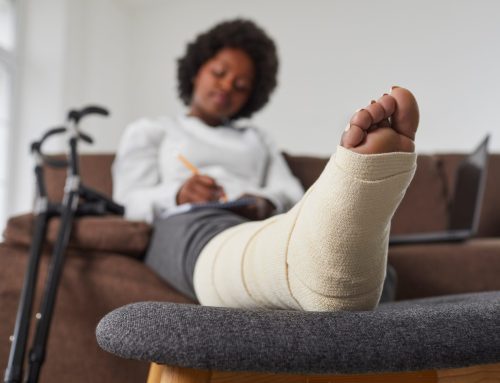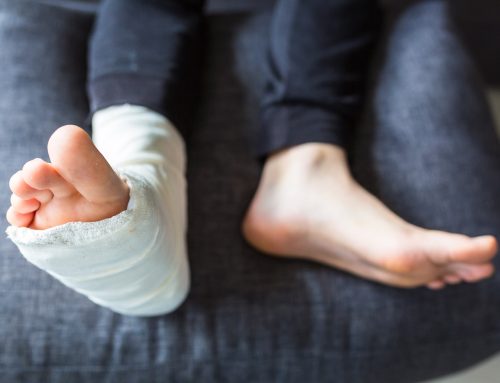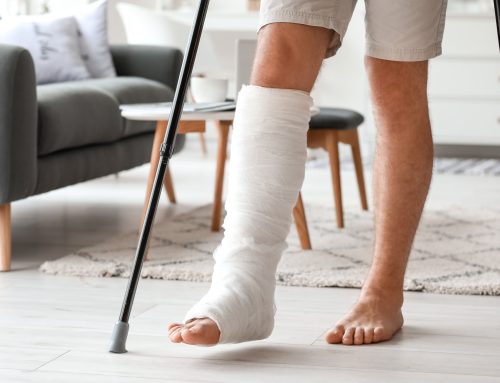Our bones can become more fragile as we age, increasing the risk of fractures and osteoporosis. While several factors contribute to bone loss, including genetics and hormonal changes, regular weight-bearing exercise is one of the most effective ways to slow down the process.
Weight-bearing exercises are activities that require you to support your body weight. These exercises include walking, jogging, dancing, or weightlifting. Weight-bearing exercises stimulate the bones to maintain and increase their density, making them stronger and more resistant to fractures.

The Benefits of Weight-Bearing Exercise
There are several benefits to incorporating weight-bearing exercise into your regular routine. Some of the most significant include:
Improved Bone Density
Weight-bearing exercises place stress on your bones, which encourages them to grow stronger and denser. This activity can help slow down the process of bone loss and reduce your risk of osteoporosis.
Stronger Muscles
Weight-bearing exercises don't just benefit your bones; they also help to strengthen your muscles. This added strength can help improve your balance, reducing the risk of falls that lead to fractures and other injuries.
Better Overall Health
Weight-bearing exercises also provide a range of other health benefits. These exercises can help to improve your cardiovascular health, reduce your risk of diabetes, and lower your blood pressure.
Reduced Risk of Fractures
By improving your bone density and muscle strength, weight-bearing exercises can help to reduce your risk of fractures. This type of exercise is especially important as we age, as fractures can take longer to heal and may require surgery or other interventions.
How to Get Started
If you're new to exercising, it's essential to start slowly and gradually increasing the intensity and duration of your workouts. Before choosing weight-bearing activities that are right for you, it's important to:
Start Slowly
If you're new to weight-bearing exercise, start with just a few minutes a day and gradually increase the amount of time you spend exercising. Starting slow can help prevent injuries and allow your body to adjust to the new activity.
Use Proper Form
Using proper form is essential to prevent injuries and get the most out of your workouts. Consult a trainer or other fitness professional if you need help learning how to perform a particular exercise.
Gradually Increase Intensity
As you get stronger and feel more comfortable with weight-bearing exercise, you can gradually increase the intensity of your workouts. This can include increasing the weight you lift, adding resistance to your exercises, or increasing the duration or intensity of your cardio workouts.
Mix It Up
Variety is essential when using weight-bearing exercises to slow bone loss. Mix up your routine by incorporating different activities and exercises to keep things interesting and challenge your body in new ways.
Incorporating Weight-Bearing Exercise into Your Daily Routine
One of the best things about weight-bearing exercise is that it's easy to incorporate into your daily routine. There are many different types of weight-bearing exercises, so choosing activities that you enjoy and that are appropriate for your fitness level is key. Here are some weight-bearing exercise options to help you get started:
Choose the Stairs
Taking the stairs instead of the elevator is a great way to add a bit of weight-bearing exercise to your day. Start with just a few flights and gradually increase the number as you get stronger.
Attend a Fitness Class
Joining a group fitness class can be a great way to incorporate weight-bearing exercise into your routine. Many gyms and community centers offer classes specifically designed for older adults, such as yoga, pilates, or aerobics. Dance classes are another fun and effective way to increase your heart rate and work your bones and muscles.
Lift Weights
Weightlifting is an excellent way to improve your bone density and muscle strength. If you're new to weightlifting, start with lighter weights and gradually increase the amount you lift.
Spend Time Outside
Outdoor activities like hiking, gardening, and tennis are terrific ways to incorporate weight-bearing exercise to slow bone loss. Walking outside is one of the easiest and cost effective weight-bearing exercises you can do. Try taking a brisk walk after lunch or walking to the store instead of driving. Plus, getting outside can benefit your mental and emotional health.
Incorporating weight-bearing exercise into your daily routine can be an effective way to slow down bone loss and improve your overall health. With a bit of effort and consistency, you can keep your bones strong and reduce your risk of fractures as you age. Remember to start slowly, use proper form, and gradually increase the intensity. And most importantly, have fun and enjoy the many benefits of weight-bearing exercise!
You can also support your bone density by administering a low-intensity pulsed ultrasound device for just 20 minutes per day. Contact Fracture Healing to find out more.
Have you incorporated weight-bearing exercises to slow bone loss? If so, what is your favorite activity? Share your thoughts with our readers in the comments below.





